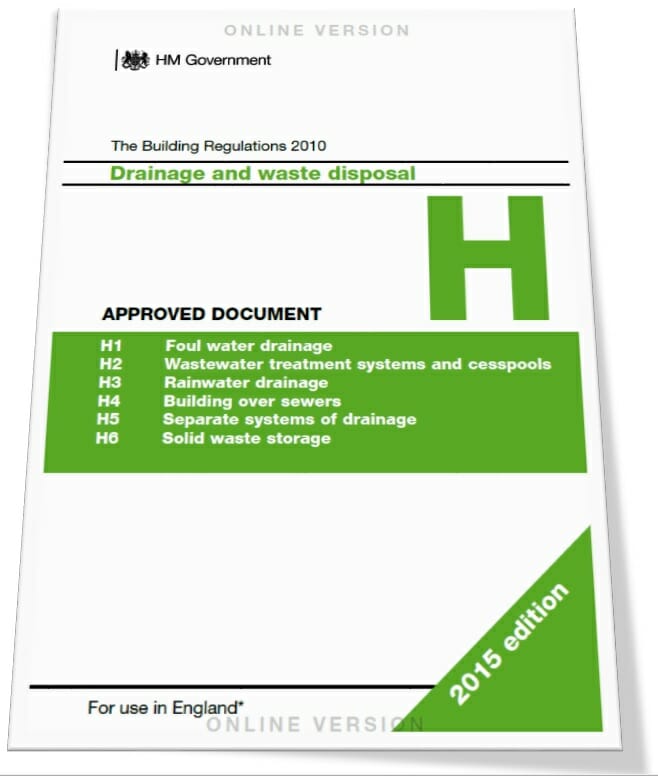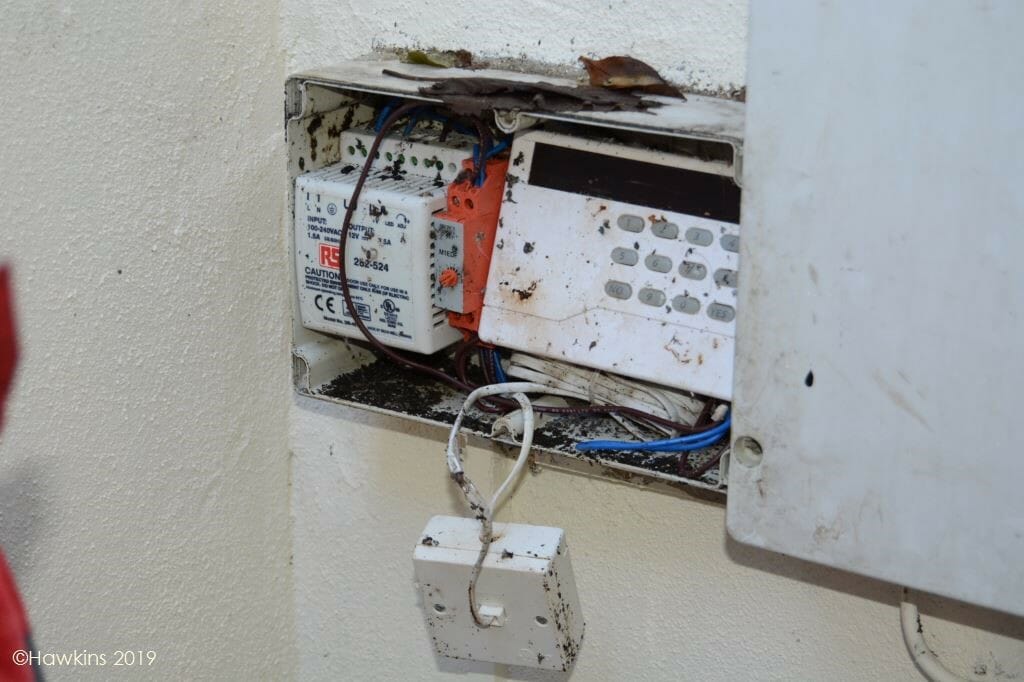It is widely reported that climate change will result in an increased flood risk in the UK, with wetter winters and more intense summer thunderstorms. Almost every other year of the last decade saw rainfall records broken and extreme floods affecting various parts of the country. 2019 was no exception: 130 homes were flooded in Wainfleet after the River Steeping breached its banks in June, and over 600 homes and business in both the Midlands and South Yorkshire were affected by flooding in November. Thankfully a near-catastrophic collapse of the Toddbrook Reservoir was averted. These ‘high profile’ flood events are widely publicised, and for good reason.

Sewer flooding, in contrast, receives little media attention despite affecting thousands of properties a year (between 3,000 and 6,000 a year for the last five years[1]). However it can be just as unpleasant, disruptive and costly for those affected – and their insurers.
WHAT IS SEWER FLOODING, AND WHY DOES IT OCCUR?
Sewer flooding occurs when sewage, often combined with rainwater, backs up from the public sewer and overflows, for example from manholes on the public sewer, or from low-lying sanitary appliances like toilets and showers. There are various reasons why water can back up from public sewers, such as blockages and pump station failures. However, in many cases sewers are simply filled with water due to heavy rainfall.
Perhaps unsurprisingly, properties with living space below ground level (such as basements) are at particular risk. There were almost 2,000 planning applications to build or extend basements during 2015 alone[2]. This figure does not include conversions of existing cellars into liveable space, nor refurbishments to existing habitable basements, as these generally do not require planning permission[3]. However, the Building Regulations will still apply[4] to such refurbishments. ‘Approved Document H’ gives guidance on how to comply with the drainage and waste disposal requirements of the Building Regulations. It acknowledges that public sewers, in particular those that take combined rainwater and sewage, commonly become surcharged, causing a risk of flooding to low-lying properties:
“Combined and rainwater sewers are designed to surcharge (i.e. the water level in the manhole rises above the top of the pipe) in heavy rainfall. Some foul sewers also receive rainwater and therefore surcharge. For low lying sites (where the ground level of the site or the level of the basement is below the ground level at the point where the drainage connects to the public sewer) care should be taken to ensure that the property is not at increased risk of flooding. In all such cases the sewerage undertaker [typically the local water company] should be consulted to determine the extent and possible frequency of the likely surcharge”

HOW CAN BASEMENTS BE PROTECTED AGAINST SEWER FLOODING?
In recognition of the risk of surcharge, Approved Document H requires basements that contain sanitary appliances to have protective measures in order to prevent flooding from the public sewer. It recommends one of two options, depending on the level of risk:
- Where there is a low risk of surcharge, and a gravity drainage connection to the public sewer is possible, an anti-flooding valve (also known as a non-return valve) can be used. Anti‑flooding valves should comply with the requirements of BS EN 13564.
- Where there is a high risk of surcharge, or if the sanitary appliances are below the level of the public sewer, drainage from the basement should be pumped. Pumping installations should comply with the requirements of BS EN 12056.
The two options are shown in Figure 1. In a pumping installation, wastewater from the basement drains to a sump. When the sump fills up, a float switch activates the pump, which then discharges the collected wastewater into the public sewer via a ‘backflow loop’ (a section of pipe that loops above the maximum expected surcharge level). During times when the public sewer becomes surcharged, the backflow loop prevents water from the public sewer from backing up into, and overflowing from, the sanitary appliances in the basement. Meanwhile, the pump continues to discharge wastewater from the basement.
Various safety measures can be provided to manage the residual risk of flooding should the pump become overwhelmed or fail; for example backup/standby pumps, auxiliary power supplies, alarms and telemetered alerts that warn of a high water level in the sump.


Anti-flooding valves can range from simple hinged flaps that open and close with the weight of the water, to more complex motorised flaps that are triggered by pressure sensors, however their principle of operation is the same. They are designed to be open when the water level in the public sewer is low, allowing wastewater from sanitary appliances in the basement to discharge by gravity. Therefore anti-flooding valves are only suitable where the sewer is below the level of the basement’s drains. When the public sewer becomes surcharged, the valve is designed to close automatically to prevent water backing up and flooding the basement.
Another key requirement of Approved Document H is that “all drainage unaffected by surcharge [for example sanitary appliances above ground level] should by-pass the protective measures and discharge by gravity”. This is important to limit the amount of wastewater that can become ‘trapped’ upstream of an anti-flooding valve while it is closed (or upstream of a pump, should it fail).

WHAT CAN GO WRONG?
Pumping installations can fail for a variety of reasons. Some common examples include:
> The failure of the float switch to activate the pump if it is unable to move freely. This can result from a lack of maintenance, or if the pump and float have been installed in a sump chamber that is too small. High level alarms are generally operated by a float switch, and so can fail in a similar way.
> Mechanical failure of the pump, possibly due to gradual wear and tear.
> Electrical failure of the entire installation, if the primary pump is installed on the same circuit as the safety measures, such as backup pumps and alarms (which we have seen on numerous occasions). An electrical fault on any one component can cause the whole installation to fail.
> Failure of the pipework downstream of the pump can prevent the pump from discharging water from the sump.

Both pumping installations and anti-flooding valves require regular inspection, testing and maintenance. The recommended frequency is generally specified by the manufacturer and/or other relevant guidance (for example BS EN 12056 and BS EN 13564).
A lack of maintenance can result in an anti-flooding valve’s movement being impeded and can restrict its ability to form a watertight seal.

If an anti-flooding valve does close effectively, preventing backflow from the public sewer, wastewater cannot discharge from the basement. The trapped wastewater creates a risk of flooding in its own right, and is why anti-flooding valves are only recommended when there is a low risk of surcharge. A person in the basement would probably notice that water was not draining from their sanitary appliances, and would most likely stop using them before flooding occurred. However, if sanitary appliances (or rainwater) from above ground level have been connected upstream of the anti-flooding valve (contrary to the requirements of the Building Regulations), the people using those appliances are unlikely to realise that their wastewater is becoming trapped in the basement drains until it is too late.

Care is also required when making alterations to either the drains or the sanitary appliances in the basement. For example, the installation of a shower in the basement can increase the risk of flooding by providing a lower point from which the drainage system can overflow (as opposed to an item positioned off the floor, like a sink).
POTENTIAL ROUTES FOR RECOVERY
As with many other types of losses, recent building work should always raise a ‘red flag’ for subrogated recovery. Even minor works (such as installing a shower) or works that might seem at first to be remote and unrelated (for example alterations to the drainage of upper storeys) can be worth considering. Some common third parties who might have contributed to a sewer flooding incident include:
> The architect / designer. Was the drainage system designed appropriately and in accordance with the relevant regulations and standards? Was the water company consulted and were the appropriate protective measures specified?
> The installation contractor. Were the drainage system and protective measures installed in accordance with both the design and the manufacturer’s specifications?
> The maintenance contractor. Were the protective measures maintained in accordance with both the relevant standards and manufacturer’s specifications?
It can also be worth investigating why the public sewer became surcharged. For example, there may be a potential for recovery if a public sewer became either damaged or blocked by a third party contractor working in the road.
Our experts have many years of experience investigating and identifying the causes of flooding and drainage failures, and advising on measures to reduce future risk. If you are interested in hearing more, please contact us. You are always welcome to call one of our experts for an informal, confidential chat with no commitment.
ABOUT THE AUTHOR
Richard Keightley is a Chartered Water and Environmental Manager and Chartered Environmentalist. He specialises in the investigation of flooding, water ingress and drainage issues, and has provided CPR-35 expert witness evidence in civil claims for both claimants and defendants. Richard joined Hawkins in 2017 as part of our civil engineering team, having previously worked at two major engineering consultancies, a water and sewerage company and New Zealand’s National Institute of Water and Atmospheric research
[1] https://discoverwater.co.uk/sewer-flooding
[2] https://www.directlinegroup.co.uk/en/news/brand-news/2017/british-property-market-goes-through-the-floor.html
[3] https://www.planningportal.co.uk/info/200130/common_projects/5/basements
[4] https://www.planningportal.co.uk/info/200130/common_projects/5/basements/2







